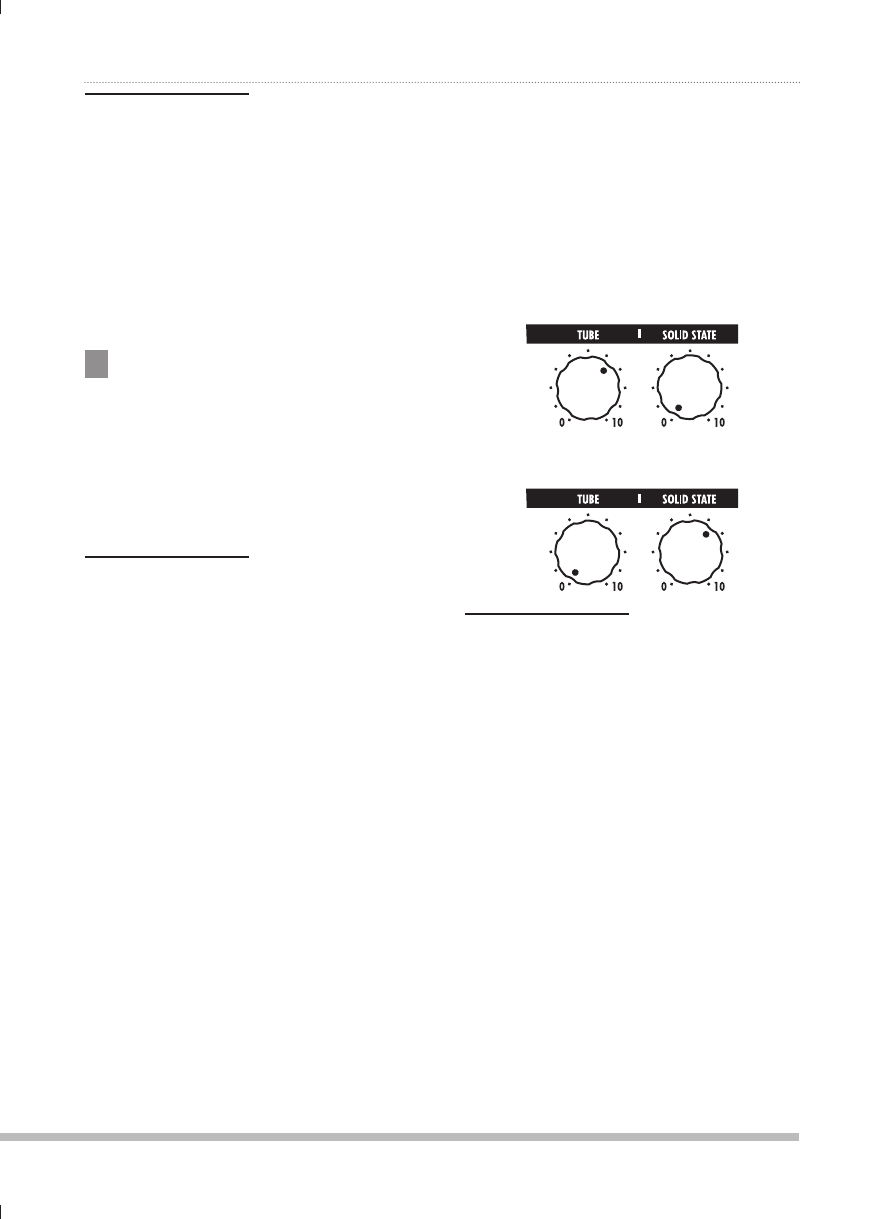
17
ZOOM B9.1ut
Switching Modules On and Off (Manual Mode)
HINT
• The patch level and total balance are
parameters of the TOTAL/FUNCTION module
(
→ p. 79). When you change one of these
parameters, the B9.1ut switches to edit mode.
To return to manual mode, press the [EXIT]
key.
• The changed patch settings are not
automatically retained when you change to
another patch. If necessary, store the patch to
retain the new settings (
→ p. 27).
Using the Accelerator
The input stage of the B9.1ut incorporates
an Accelerator function that amplifies the
analog signal before effect processing using
a tube or solid state circuit. This lets you mix
characteristic tube compression and distortion
with clean solid state sound and then send the
signal to the effect circuitry.
HINT
The Accelerator is active in all modes.
Accelerator settings are not stored as part of the
patch.
To adjust the Accelerator, use the controls of the
Accelerator section on the panel. The control
functions are explained below.
● [TUBE] control
This control adjusts the input signal gain of
the tube circuit. Turning the control clockwise
increases the volume level and the typical
tube sound character.
● [SOLID STATE] control
This control adjusts the input signal gain of
the solid state circuit. Turning the control
clockwise increases only the volume. At the
maximum position, gain is about +6 dB. This
can be used to increase the gain for the signal
before effect processing.
Depending on the settings made for the
Accelerator, the effect intensity of the COMP
module and the distortion depth of the PRE-
AMP module also will change.
The following setting examples show how to
achieve unity gain (same input and output level)
for using the tube or solid state controls only.
We recommend using these settings as a starting
point for making adjustments to the Accelerator.
● Tube control unity gain setting
● Solid state unity gain setting
NOTE
When both controls are set to minimum, no
signal will be input to the B9.1ut.


















